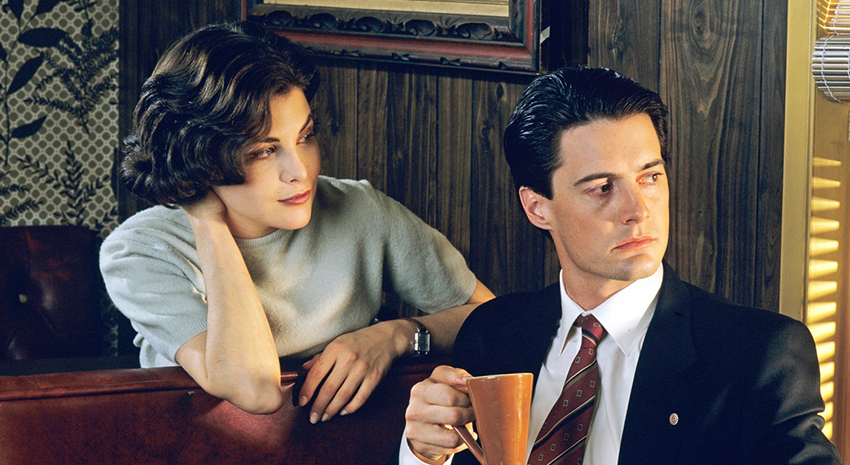Many television reboots are terrible. You need look no further than Netflix’s recent investments to see that. But, the case against TV reboots doesn’t just begin and end with the schmaltzy awfulness of Fuller House. Even beloved properties like Twin Peaks, which Showtime is reviving with an 18-episode continuation of the 1990–1991 ABC series this May, are better left in the vault. Television, like all art, is about creativity. Yes, the creativity of television is neatly broken up into acts and surrounded by commercials for breakfast cereal, but it is creativity nonetheless. Rebooting shows eliminates and complicates much of the creative process that needs to exist in order to create a great television show. The end result is a product that has a good chance of being decent, but very little chance of being great.
Art Should Be Created for a Moment
Great shows respond to a particular moment in time. It’s easy to see this with first ballot hall of fame shows like The Wire, but you can even see it in shows that may not be quite so obviously about important current events. Sex and the City explored a new moment in female empowerment. Cheers was a love letter to neighborhood bars in an era when the Manifest Destiny march of Ruby Tuesdays and TGI Fridays was just picking up steam. Even long-running shows you might disagree with politically, like the Tim Allen sitcom Last Man Standing, often speak to a perceived strain in the culture.
Reboots don’t speak to a moment—they ask how a past moment can speak to the present. You might argue that period pieces do the same thing. They don’t. A period piece like The People v. O.J. Simpson or John Adams is written in the present moment. Before the show is greenlit, part of the conversation is invariably, “What resonance does this particular story have today?” When it comes to a reboot, the question is, “Hey, we have the rights to this thing: Do you think we can make any money off of it today?”
The Problem of Plot
In addition to this big-picture problem with reboots there are plot problems that have the potential to gum up the works of every scene in every episode. Part of the appeal of reboots is nostalgia. The Gilmore Girls and Full House reboots are so dedicated to nostalgia, the shooting style and dialogue go out of their way to preserve the old show in amber to the detriment of the finished product. Other reboots like MacGyver and One Day at a Time update their premises for present day, but make sure to wink references to the original out to the audience so frequently you might think they are morse code.
This creates a problem for plotting. You have three choices when building a season of a reboot: You can recreate story lines from the old show in a new context (The Office Season 1); you can take the premise of the old show and try to go above and beyond what the old writing team attempted (MacGuyver); or, you can extend the old story, picking up where you left off (Gilmore Girls). All of these approaches put unnecessary strain on the creators of the show. Instead of building something totally new, inspired by the moment, you are a slave to something that was built long ago, usually by someone else. While there is a sturdy base for a writing team to walk into, someone else already built it. At best, you’re remodeling.
Go to the Movies
Because television is built with seasons of episodes, reboots work especially poorly. If you reboot films like Westworld (1973) or Friday Night Lights (2004), you aren’t really beholden to the original material beyond the broad strokes. Yes, the outstanding TV series Westworld is about a robot theme park and Friday Night Lights is about a Texas high school football team, but strung out over 12 episodes, and an hour and a half of movie can’t possibly provide that many plot points. When you’ve got seasons of television from an old show to rely on, the dozens of episodes in the canon can weigh on the series. Often showrunners end up lost in the forest, focusing on fidelity to the old trees rather than blazing a new trail through the woods.
Watching the pilots of the rebooted Gilmore Girls or Fuller House is as much like playing nostalgic Bingo as watching television. The introduction of all your old favorite characters is reminiscent of “Too Many Cooks,” as the script races to bring back all of your old favorite characters before the audience walks away. Once they arrive, the characters spend so much time talking about what they’ve been up to since we last saw them, we barely have time to squeeze in any plot.
TV Shows Aren’t Puzzles
Films, novels, comic books, and “true events” all make fine inspiration for television shows. If you look back at TV reboots, the track record is spotty at best. Arguably the best TV reboot of all time, Battlestar Galactica, is the exception that proves the rule of just how difficult it is to re-launch a show. Battlestar Galactica hung onto its basic original premise, but quickly expanded into questions far beyond the scope of the original. Showrunner Ron D. Moore came to the project with a notoriously detailed show bible that ran over 50 pages. The clear vision and mythology in the document tells anyone who reads it that he has a clear vision for the new work, unique from the original series. Moore set out to create something totally new from the earliest stages, and that’s why he succeeded.
Most showrunners don’t have the time or inclination to develop this kind of unique vision. Often, they are saddled with the property by an ambitious executive with dollar signs in their eyes, and do their best to stay ahead of the project. Creating the series then becomes less about creating a new world and more like solving a puzzle. What pieces can you pull from the old to create something new? How much of the old show needs to be in the new show’s DNA? How will you expand on what’s been done before? These concerns swirl around a reboot project, and squeeze away precious hours that should be spent on world-building and character development.
Creation Without Representation
In addition to all of the nuts and bolts creative challenges that reboots provide, there is also the challenge of representation. Many reboots shift the race and/or gender of the original characters (Ironside, Charlie’s Angels, etc.), but that is different from telling stories with intentional diversity of representation. Simply changing the exterior appearance of a pre-existing character is very different from creating a show like Transparent or Atlanta from the ground up. Even the best intentioned artists will often end up with token diversity rather than new narratives for new audiences if they are forced to wring representation out of old stories.
There are going to be many more television reboots in the coming years. Industry estimates foresee as many as 500 narrative TV shows being produced in 2017. It would be good if as few of them were reboots as possible. Rebooting provides unnecessary difficulty in terms of plot, structure, and theme that a writing staff doesn’t need. Even a writer with a clear, passionate vision is going to be responsible to fans of the old show, and often the money behind the old show, to make sure it reflects well on the franchise. Reboots also limit the kind of narratives that can be explored. Rebooting a show with quota-like levels of diversity is a different and less helpful thing than offering new projects from new voices. It isn’t that reboots are lazy. It’s actually that rebooting a show takes unnecessary work that distracts from the already demanding work of building something from the ground up. Why order an extensive remodel of an old flawed show when you can build something new, fresh, and relevant?
Besides, if you’re lucky, it might be good enough to get rebooted 15 years down the road.











